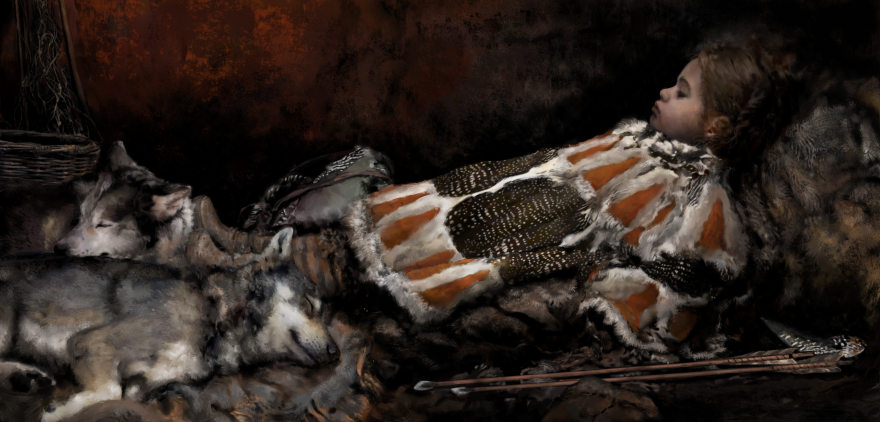There is urgent news all over the world, but this week I've also thought of a child who lived 8,000 years ago.
The small teeth of the child, who may have been as old as 10, or as young as 3, have been excavated from what seems to be a burial site in eastern Finland. A microscopic analysis of the site was recently published in the journal of the Public Library of Science.
Researchers discovered the grave when a forest trail was cleared, revealing a swath of red ochre — a clay known to be used in burials. The soil in Finland is acidic, so only traces remain at the site today. Two quartz arrowheads were found along with the small teeth. There were also fragments of feathers. Scientists surmise that the child's body may have been laid to rest on a bed of down, or perhaps wrapped in a feathered cloak.
Small hairs were found at the feet of the child, from a wolf — or a dog.
Kristiina Mannermaa of the University of Helsinki's Department of Cultures said dogs have been found alongside remains in other ancient burial sites.
"This all gives us a very valuable insight about burial habits in the Stone Age," she said in a statement, "indicating how people had prepared the child for the journey after death."
Those words pierce through the academic prose of the statement: "prepared the child for the journey after death."
8,000 years ago, life for all had to be about bare survival. The perpetual ache of hunger; the rivalry for food with humans and other animals; the killing risk of cold, floods, and sickness.
We often look at other times or people, even now, and think we don't see ourselves. We feel nothing in common. We wonder: How could people do that, think, or feel that way?
But we can look at the story of the child laid in the ground, so long ago, to see that people who had to struggle just to survive each day still made time and room in their hearts to care for that child. They laid down the child and wrapped them in softness. They placed a dog or a wolf alongside to guard them on a journey somewhere beyond.
It may be impossible to know where the people who buried that child thought they were going, whatever was their view of life and afterlife. But it seems like they wanted the child to feel warm. They wanted them not to be lonely. They wanted that child to know they were loved.
Copyright 2022 NPR. To see more, visit https://www.npr.org.



